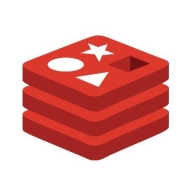

Redis and ClickHouse are leading technologies in data management, each offering distinct capabilities. Redis holds a competitive advantage in real-time data processing due to its in-memory data store capabilities, making it ideal for applications requiring speed and simplicity. ClickHouse, on the other hand, excels in handling big data analytics with its rapid query processing and efficient storage mechanisms.
Features: Redis's in-memory data store provides exceptional speed and simplicity, making it highly effective for caching, real-time analytics, and communication across microservices. It supports diverse data types, such as strings, hashes, and sets, and offers robust persistence options through RDB snapshots and AOF logs. Redis also features master-slave replication for high availability and includes a publish/subscribe model to enable efficient real-time messaging. ClickHouse is renowned for its column-based storage system, allowing fast and efficient data retrieval, particularly beneficial for big data analytics. It offers high performance for real-time query processing and boasts strong compression capabilities, effectively storing large datasets. ClickHouse supports numerous analytical functions out-of-the-box, easing complex data analysis without extensive coding effort.
Room for Improvement: Redis needs better documentation and GUI options while also improving community engagement and addressing its single-threaded nature and fault tolerance. ClickHouse requires enhanced third-party integrations, improved SQL syntax compatibility, and comprehensive documentation to support advanced use cases. Pricing for ClickHouse's cloud service and its cluster setup process could be more optimized to better cater to modern deployment needs.
Ease of Deployment and Customer Service: Redis is commonly deployed via Public Cloud, with some use cases in Hybrid and On-premises environments, offering manageable deployment options. ClickHouse is preferred for On-premises installations due to its suitability for big data workloads. Both Redis and ClickHouse have limited direct technical support, suggesting opportunities for improving customer engagement and support services to enhance user experience.
Pricing and ROI: Redis, being open-source, offers significant cost savings when self-managed, although managed services provide predictability at an additional cost. ClickHouse also provides cost-effective solutions through its open-source model, offering high value, especially for startups dealing with large datasets. Both technologies deliver positive ROI by enhancing system performance and developer productivity while optimizing resource usage to reduce operational costs. Redis's efficiency shines in infrastructure management, whereas ClickHouse stands out in processing extensive data sets efficiently.
| Product | Market Share (%) |
|---|---|
| Redis | 5.0% |
| ClickHouse | 4.2% |
| Other | 90.8% |


| Company Size | Count |
|---|---|
| Small Business | 6 |
| Large Enterprise | 5 |
| Company Size | Count |
|---|---|
| Small Business | 11 |
| Midsize Enterprise | 3 |
| Large Enterprise | 8 |
ClickHouse is renowned for its speed, scalability, and real-time query performance. Its compatibility with SQL standards enhances flexibility while enabling integration with popular tools.
ClickHouse leverages a column-based architecture for efficient data compression and real-time analytics. It seamlessly integrates with tools like Kafka and Tableau and is effective in handling large datasets due to its cost-efficient aggregation capabilities. With robust data deduplication and strong community backing, users can access comprehensive documentation and up-to-date functionality. However, improvements in third-party integration, cloud deployment, and handling of SQL syntax differences are noted, impacting ease-of-use and migration from other databases.
What features make ClickHouse outstanding?ClickHouse is deployed in sectors like telecommunications for passive monitoring and is beneficial for data analytics, logging Clickstream data, and as an ETL engine. Organizations harness it for machine learning applications when combined with GPT. With the ability to be installed independently, it's an attractive option for avoiding cloud service costs.
Redis offers high-speed, in-memory storage, renowned for real-time performance. It supports quick data retrieval and is used commonly in applications like analytics and gaming.
Renowned for real-time performance, Redis delivers high-speed in-memory storage, making it a favorite for applications needing quick data retrieval. Its diverse data structures and caching capabilities support a broad array of use cases, including analytics and gaming. Redis ensures robust scalability with master-slave replication and clustering, while its publish/subscribe pattern renders it reliable for event-driven applications. The solution integrates smoothly with existing systems, minimizing performance tuning needs. Although documentation on scalability and security could be improved, Redis remains cost-effective and stable, commonly utilized in cloud environments. Enhancing integration with cloud services like AWS and Google Cloud and refining GUI may improve usability.
What are the key features of Redis?Redis finds application across industries for tasks like caching to improve application performance and speed, minimizing database load. It enables real-time processing for session storage, push notifications, and analytics. As a messaging platform, Redis handles high traffic and supports replication and clustering for cross-platform scalability.
We monitor all Vector Databases reviews to prevent fraudulent reviews and keep review quality high. We do not post reviews by company employees or direct competitors. We validate each review for authenticity via cross-reference with LinkedIn, and personal follow-up with the reviewer when necessary.